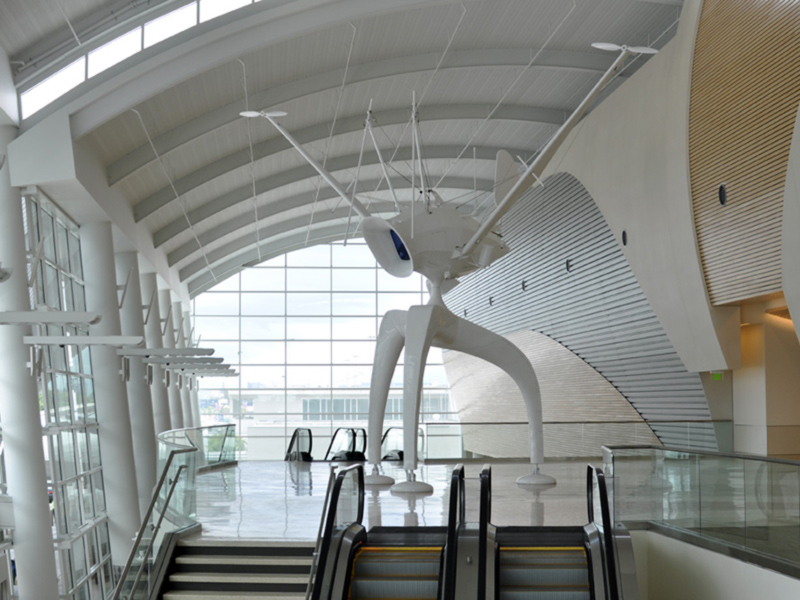Downtown Height Limits
Crane Fee Program Application
Fill out the Crane Fee Billing Form to satisfy the Crane Fee Deposit requirement. Deposit is required prior to approval of building permit. The schedule of Active Downtown Construction Projects is used to determine crane fees when multiple cranes are operating within the Downtown Crane Guidance Area.
Crane Fee Program Published Monthly Rates - as of 9/28/2021
Active Downtown Construction Projects - as of 02/22/2023
Operating Cranes in the Downtown Crane Guidance Area
The City of San Jose Construction Crane Notification Form is required to be filled out for all crane activity on a project site, including initial crane erection, raising or lowering the crane, and demobilization. One form should be filled out for each construction crane on-site.
City of SJ Construction Crane Notification Form
Crane Fee Program Ordinance (City Code of Ordinances)
FAA Part 77 Airspace Review (Form 7460-1) Tutorial
Construction Crane Guidance & Fee Program Packet
Maps
Downtown Building Height Limits (Aerial Map)
Downtown Building Height Limits (Contours Only)
Downtown Crane Guidance Area Boundary
Maximum Presumed FAA Crane Height Limits (Contours Only)
Maximum Presumed FAA Crane Heights above Existing Downtown Height Limits (Contours Only)
Downtown San Jose Construction Crane Study
In March 2019, at the conclusion of the Downtown Airspace Development Capacity Study (DADCS), the San Jose City Council adopted the maximum downtown building height limits and directed staff to develop a construction crane policy to minimize impacts to airline service during construction. As temporary crane heights (or other means and methods of construction) could reasonably exceed the heights of the maximum building height limits, therefore, resulting in additional impacts to aviation operations at SJC. Additionally, the duration of construction and the season in which the construction crane would be operating may have significant impacts on aviation operations at SJC. Therefore, in June 2020, the City of San Jose along with the consultant project team of Landrum & Brown (L&B) and Flight Engineering, LLC. performed the Construction Crane Height Guidance Analysis Study to evaluate the technical and operational impacts on aviation operations and to formulate solutions to mitigate impacts to aviation at SJC while also striking a balance to meet the needs of the local development community. As part of the construction crane height guidance analysis, several technical assessments were conducted including:
- Airline and FAA coordination regarding critical TERPS instrument approach and departure procedures utilized by airlines at SJC
- Development of airspace surface protection scenarios for temporary construction cranes based upon critical TERPS instrument approach and departure procedures
- Stakeholder outreach and engagement
- Aircraft performance assessments for various current aircraft types, aircraft engine variants, destinations including both domestic and international under various crane height scenarios to evaluate airline weight penalty impacts
Based on the crane heights identified in the construction crane height guidance analysis and the associated potential for weight impacts to the airlines, in March 2021, Mayor and City Council directed Airport staff to explore a construction crane fee program to reduce landing fees for impacted airlines and ensure the construction cranes were removed timely. The analysis determined that certain flights have the potential for weight impacts on departure, resulting in the denied boarding (DB) of passengers (PAX). In order to offset the costs to the airlines for these denied passengers, a followup Construction Crane Fee Program Study was conducted to determine the frequency of these impacts, the quantification of potential denied passengers, and the estimated financial impact cost to the airlines. In order to offset the financial impacts, the City established a developer fee (DF) for all Developer's operating construction cranes above the Downtown Building Height Limits, in order to compensate for the airlines’ loss. Those DFs are used to credit airline landing fees for the affected airlines through the landing fee credit program.
On March 9, 2021 and September 28, 2021 respectively, the City Council approved recommendations from the Construction Crane Height Guidance Study and Construction Crane Fee Program Study, which are detailed in the final report. All stakeholder presentations and supporting technical documents shared during the fifteen-month period are included in the final report.
[Downtown San Jose Construction Crane Study Final Report]
Downtown Airspace Development Capacity Study (DADCS)
In 2007, new airspace protection mapping was undertaken by the City of San José which placed height limitations on allowable development surrounding Mineta San José International Airport (SJC) in order to minimize impacts to airline service. The airspace protection mapping consisted of a combination of the lowest critical One-Engine Inoperative (OEI) and United States Terminal Instrument Procedures (TERPS) airspace protection surfaces. However, due to the changing environment in aviation operations as well as the need and desire for future building development in the City of San Jose, a new study was undertaken to assess the existing conditions and future needs of the Airport and the development community. In February 2018, a comprehensive study referred to as the Downtown Airspace Development Capacity Study (Project DADCS) was initiated over and spanned a thirteen-month period. The City of San José along with the consultant project team of Landrum & Brown (L&B), Jones Lang LaSalle (JLL) and Flight Engineering, LLC., assessed the impacts of increased airspace protection heights for SJC and the tradeoffs between increasing allowable building development heights and the impacts to aviation departure operations from Runways 12L and 12R at SJC.
The study consisted of a comprehensive evaluation of the following metrics which will be described in extensive detail in this report:
- Existing conditions assessment for SJC aircraft operations
- Existing real estate and land use environment in the Downtown Core and Diridon Station
- Creation and evaluation of various airspace protection surface scenarios
- Aircraft performance and range capability assessment of existing and future destinations served from SJC
- Evaluation of aviation and real estate impacts associated with each of the airspace protection scenarios.
This final report is a compilation of the various technical memorandums and studies that were assessed by the project team during the thirteen-month period.
On March 12, 2019 the City of San José City Council approved a new policy on airspace surface protection heights in the Downtown Core and Diridon Station areas. The new airspace protection surfaces provide additional development height opportunities within the Downtown Core and Diridon Station which will be described in detail in this report.


